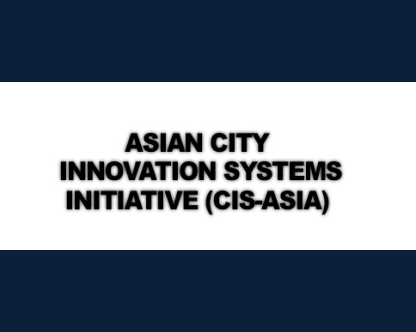Asian City Innovation Systems Initiative (CIS-ASIA)

The project is funded by The International Development Centre (IDRC) in which 6 cities are engaged, i.e. Bangkok, Ho Chi Minh City, Jakarta, Kuala Lumpur, Manila and Singapore. The study on city innovation systems of Bangkok has been jointly conducted by the Department of Urban and Regional Planning, Faculty of Architecture, Chulalongkorn University; Noviscape Consulting Group Ltd.; Urban Green Development Institute and APEC CTF. The goals of this research project are:
- To create innovativeness in enhancing livability and prosperity in six ASEAN megacities
- To find out sustainable development pathways that are responsive to the needs and interests of local stakeholders in these cities
- To establish the convergence of innovation, urban and future studies
The objectives of this project are as follows:
- To develop a new conceptual model for analyzing innovation systems in developing countries by determining the drivers of creativity and innovation, the strengths and weaknesses of each city’s innovation system
- To develop a policy framework and toolbox for integrating innovation and urban development policies
The study process consists of 3 steps, i.e. disentangle Asian innovation systems, define city innovation systems, and design future city innovation systems. APEC CTF has been actively engaged in the third step by facilitating workshops as follows:
- “City Innovation for the Future of Bangkok” during May 18-21, 2009 by employing open space technique
- Scenario planning workshop on “City Innovation: Bangkok Megacity in 2030” during 9-10 July 2010.
- Scenario planning workshop on “City Innovation: Manila Megacity in 2030” during 4-5 August 2011.
The scenarios were built according to 3 types of innovation i.e. system innovation, service innovation and architectural innovation. Besides, they were built based on 3 megatrends, namely 3Gs comprising ageing society (Grey City), low carbon society (Green City) and virtual society (Google City). A total of 18 innovations, each with drivers and inhibitors, were identified e.g. virtual education, paratransit (demand responsive transit) system, working credit, green housing, social network etc.
The content and context of Bangkok study are now being employed as a model for the studies of the counterparts.
